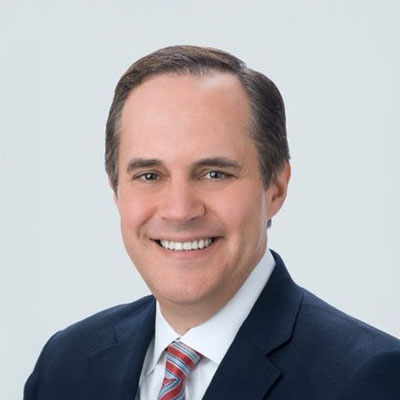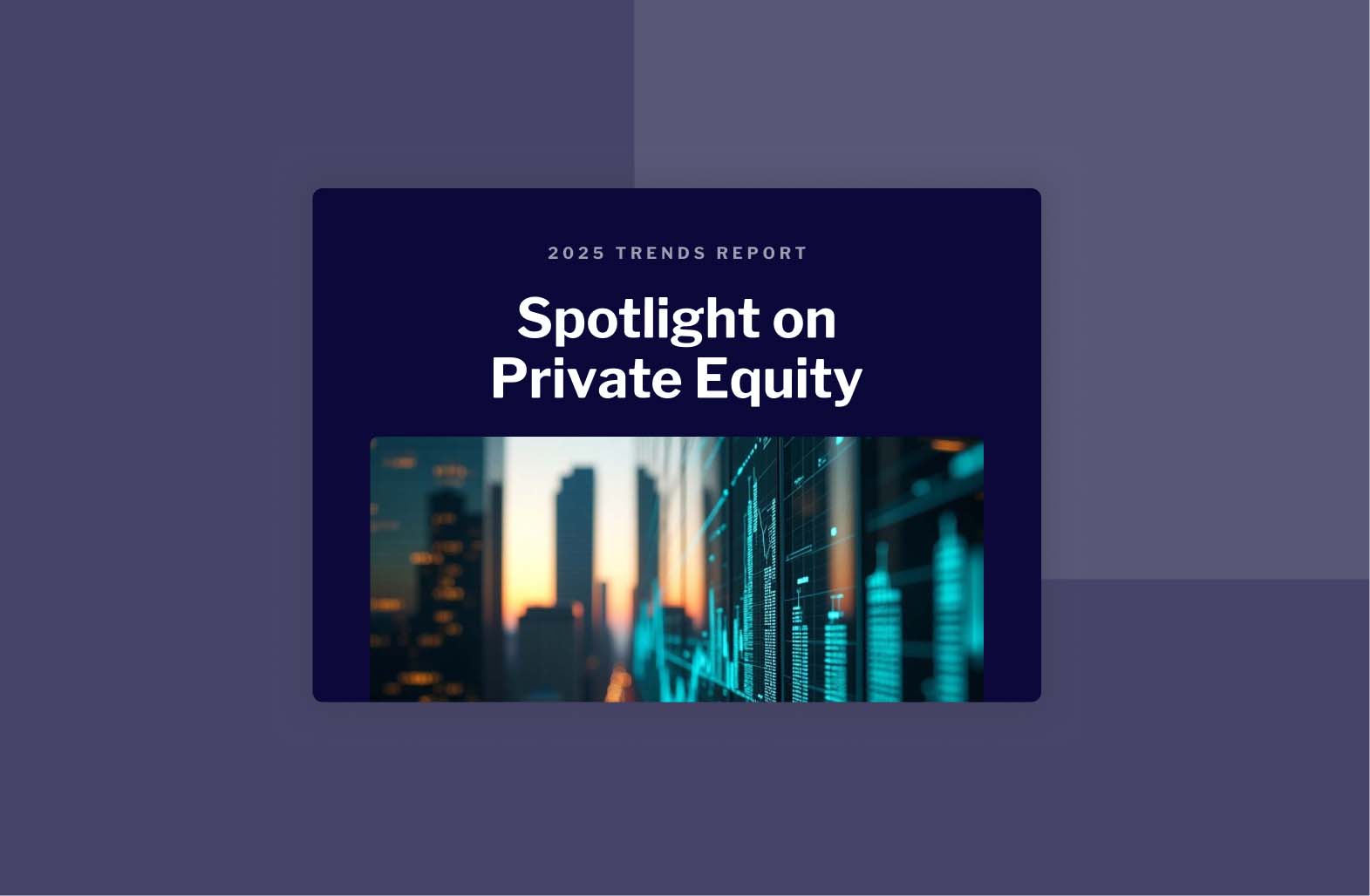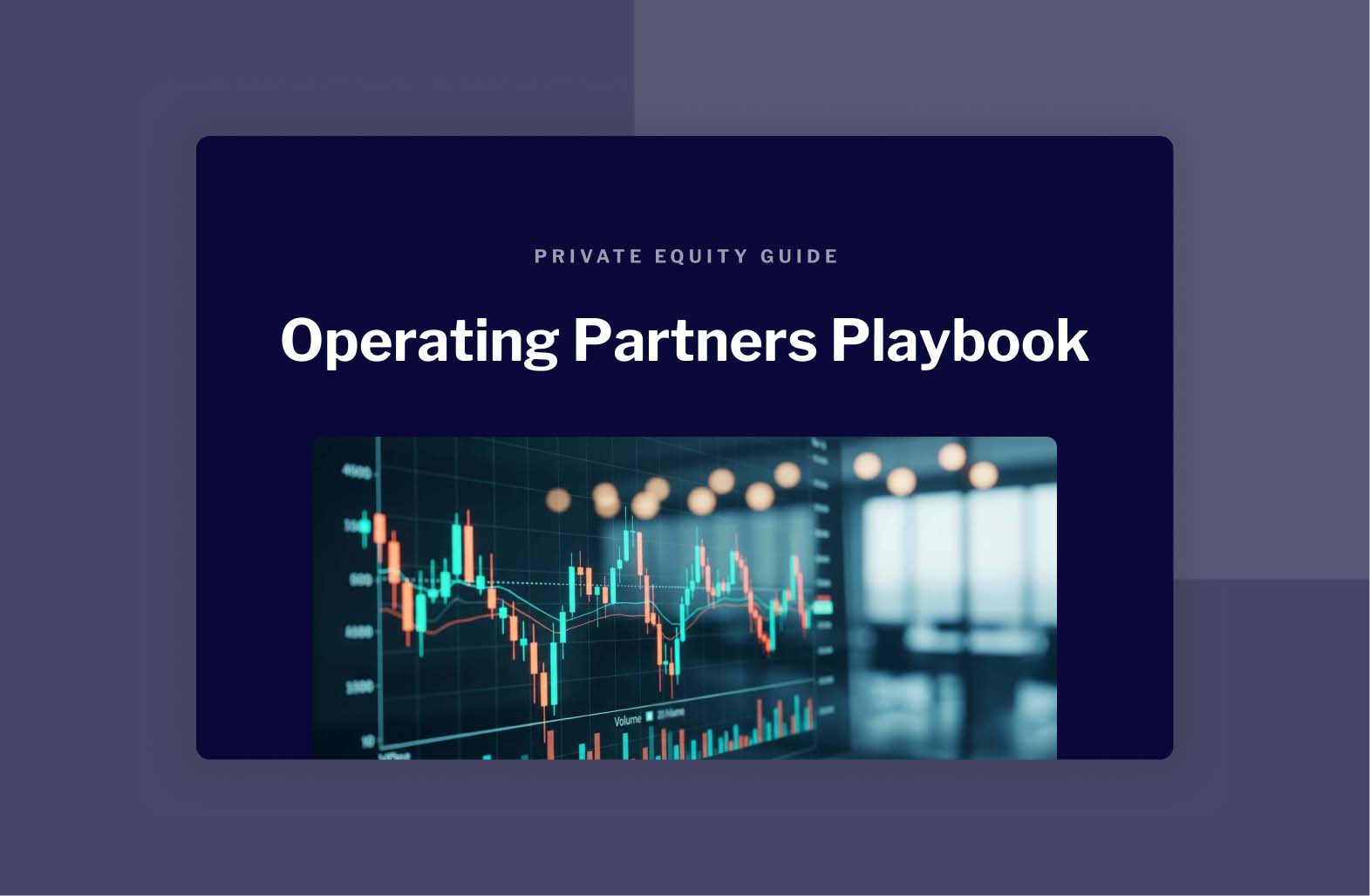introduction
Trends to Explore
Even the most seasoned private equity professionals are struggling to maintain competitive returns while navigating today’s investment landscape. Extended hold periods, regulatory scrutiny, and rapid technological disruption have fundamentally altered the traditional PE playbook, leaving fund managers searching for new approaches to value creation and risk mitigation.
With this PE landscape in mind, we’ve spoken with industry leaders and analyzed Catalant project trends to identify three major themes that PE executives must take into consideration in the coming year:
The expanding scope of due diligence
The evolution of the Operating Partner
The critical role of AI in value creation
The next generation of success will belong to firms that strategically deploy top-tier talent, leverage cutting-edge tools to streamline deal execution and fuel growth, and break free from conventional approaches to deliver results. Organizations that combine data-driven insights with innovative methodologies will separate themselves from competitors still relying on traditional playbooks. As market dynamics continue to shift, the ability to adapt quickly and execute efficiently has become the defining characteristic of outperforming funds.
Meet the Experts

Charles Kaprelian
Charles Kaprelian |
A former Big 4 partner, Charles brings more than 30 years of consulting experience advising private equity and corporate clients on M&A, carve-outs, turnarounds, and business transformations. He has a proven track record of leading complex programs and aligning cross-functional teams to help PE firms optimize portfolio companies, plan strategically, and navigate due diligence and acquisition integration.

Paul Galant
Paul Galant |
Paul is a former public company CEO and seasoned Operating Partner with over 30 years of experience advising private equity firms, leading turnarounds, and executing multi-billion-dollar transactions. He brings deep expertise in private equity, financial services, technology, and FinTech, helping organizations manage acquisitions, IPOs, and strategic value-creation initiatives.

Ted Perkins
Ted Perkins |
Previously an Associate Partner at McKinsey & Company, Ted has more than 15 years of experience spanning management consulting, investment banking, and entrepreneurship. With expertise as both a banker and a consultant, he brings a unique perspective to help organizations commercialize advanced technologies, optimize GTM strategy, and deliver tangible growth.
theme 1
The Expanding Scope of Due Diligence
Historically, due diligence in private equity transactions focused primarily on financial statements and analysis. In recent years, this has evolved into a multi-dimensional, highly intricate process shaped by ongoing regulatory shifts, geopolitical volatility, and rising scrutiny around environmental, social, and governance (ESG) factors.
Due diligence takes longer than it once did — and for good reason. Today, hidden problems are more likely to emerge in places financial reviews cannot uncover: a supplier tied to a sanctioned entity, a transition services agreement (TSA) that leaves data stranded, or even an executive with a history of controversial social media activity. The diligence process requires sharper tools and greater rigor to identify and measure real long-term risks.
Catalant Expert Charles Kaprelian shared his perspective on the increasingly complex nature of due diligence and how firms can navigate the shifting deal environment.
How firms are adapting to new diligence needs
Old methods of diligence relied heavily on “tribal knowledge,” the experiences team members had working on past deals. That model is becoming obsolete — both because it is not rigorous enough for the modern environment and because firms have new capabilities to codify knowledge and streamline operations. Firms today are investing in repeatable playbooks and automation to capture lessons learned, embed them into workflows, and evaluate companies more deeply without adding significant manual burdens.
Senior teams at PE firms often delegate to more junior people who haven’t been through transactions and may overlook issues. Expanding playbooks and automation enables them to build up databases of lessons learned and “gotchas,” improving results through structured processes.

Charles Kaprelian
Technology is the key to staying ahead of today’s diligence needs. Advanced tools, powered by AI and machine learning, play a central role in diligence processes, and firms use them to scan contracts, map regulatory exposures, and monitor reputational risks.
Many larger PE firms are automating processes to analyze massive quantities of records, contracts, and internal and external data. Those that invest in automation are building deeper, more consistent risk insights, while those that haven’t prioritized those investments are often dependent on more manual, ad hoc methods of risk analysis.
This represents a shift in mindset — a philosophical change wherein diligence is moving away from asking the question “did we check the right boxes?” toward more comprehensive risk mapping. This includes not just financial and legal risks but also softer, less quantifiable factors like culture, reputation, and brand perception.
Key focus areas for automation in due diligence
As PE firms develop and integrate more automated tools into due diligence processes, these four areas will be critical for effectively evaluating companies’ risks and liabilities:
- Regulatory and compliance: The regulatory environment is far more complex than it was five years ago. PE firms can now use automated tools to analyze bills of materials to assess tariff exposure and investigate shell companies hidden in global supply chains to identify sanction risks. This kind of forward-looking diligence is essential to avoid blindsides post-acquisition.
- Contracts and legal: Contract Lifecycle Management (CLM) has emerged as a critical area of focus. AI-powered tools can flag clauses that might otherwise slip through, such as renewal terms that lock in unfavorable conditions, customer obligations that can’t realistically be met, or hidden indemnities that create exposure. Employment, supplier, and customer contracts require closer scrutiny than ever, particularly as obligations can directly undermine operational continuity.
- Environmental and social: Environmental risks remain a constant concern, especially in industrial and chemical sectors. Issues like groundwater contamination or well poisoning may not surface immediately, but they carry material liabilities if ignored. On the social side, reputational due diligence has become more sophisticated. Firms can use automated tools to detect executives’ problematic social media activity and other brand risks that could surface post-deal. Culture — once dismissed as “soft” — is gaining recognition as a material diligence factor where AI-powered tools are critical for thorough examination.
- Information technology and cybersecurity: IT is often the most difficult and time-consuming part of a carve-out, but it is one of the most underestimated diligence domains. Carve-outs often expose flaws in poorly structured data and technology architecture, where something as basic as separating invoices between acquired and retained entities can consume months and unexpected costs. Meanwhile, weak cyber defenses can erode enterprise value almost overnight, especially post-acquisition. Buyers who underestimate IT and cybersecurity requirements risk costly issues and integration delays.
The continuing transformation of due diligence
Looking to the future, the scope of diligence will continue to expand, and the model of diligence will be hybrid:
- Automation to scan data, flag exceptions, and provide structured insights
- Human expertise to interpret findings, weigh trade-offs, and decide whether risks are tolerable
Ultimately, diligence is becoming a data-driven exercise that extends well beyond the balance sheet. The breadth of diligence is continuing to grow to include more “soft” areas such as culture, brand reputation, and consumer sentiment, all while requiring greater depth of investigation into existing diligence areas like suppliers and regulatory compliance.
Culture and brand reputation are esoteric areas, but they have big implications. You can’t predict the future with 100% certainty, but you can go through some analysis to provide a reasonable assurance that the future is weighted in your favor.

Charles Kaprelian
The firms that adapt quickly — and continue adapting as new capabilities and liabilities arise — will be best positioned to navigate hidden risks and uncover potential value.
theme 2
The Evolution of the Operating Partner
Operating Partners are an important and long-standing part of the private equity ecosystem that address a crucial gap for PE firms: sector-specific operational expertise. While PE professionals excel in corporate finance, capital markets, and investor engagement, they often lack deep operational experience in the industries they target.
Originally, Operating Partners functioned primarily as advisors and observers. Their roles often included board seats, sometimes extending to chair positions, and the mandate was clear: provide guidance during diligence, evaluate management teams, and serve as a strategic sounding board for portfolio company executives. This role was intentionally narrow, designed to supplement the PE firm’s expertise without overreaching into day-to-day operations. However, over time — and influenced by longer hold times and ever-accelerating technology and market disruptions for portfolio companies — this role has been shifting.
Catalant Expert Paul Galant shared his perspective on the evolution of the Operating Partner role as hold times lengthen and how firms can maximize the impact of their Operating Partners to fuel value creation.
The shift from advisor to business partner
Over the past decade, the role of the Operating Partner has grown far beyond that of an occasional advisor. Longer holding periods, in particular — influenced by capital market dislocations and cautious strategic buyers — have lengthened PE holding periods, exposing portfolio companies to extended operational and market disruptions. In response, Operating Partners have become critical collaborators and guides as PE firms seek to generate value past five-year holding periods.
It’s one thing to own a company for three years, and quite another to own it for 10. There is a more acute need for experienced, battle-tested Operating Partners that can help management navigate market disruptions that come with longer holding periods. This, in part, is why demand for Operating Partners has gone up significantly. The value that good Operating Partners bring is viewed more and more as a key pillar to making a transaction work.

paul galant
PE firms are relying on Operating Partners because of their experience navigating challenging operational situations and ability to provide seasoned judgment under pressure. Operating Partners with experience in both growth and turnaround scenarios bring perspective, calm, and credibility, allowing management teams to address multifaceted challenges with more confidence.
Relationship dynamics among Operating Partners, deal teams, and management teams have also evolved. Management teams now leverage Operating Partners as true business partners, soliciting input without fear of micromanagement. Transparency and trust are key: effective Operating Partners provide candid advice without overreaching into management teams’ decision-making authority. The most successful Operating Partners maintain clarity about the boundaries of their role, ensuring they advise on execution plans and KPIs without becoming accountable for day-to-day operational performance — unless explicitly needed in an interim capacity.
Increasingly, PE firms view Operating Partners as core to helping drive company performance and strategic direction. As firms are forced by longer hold times to move beyond fixing short-term operational issues and inefficiencies, Operating Partners are often seen as the co-architects of sustained value creation. They are not coming in to fix individual problems at portfolio companies; rather, they are the strategic partners helping the companies grow while safeguarding against volatility and market shifts.
Key focus areas for Operating Partners creating long-term value
Battle-tested and execution-focused, Operating Partners are critical to driving value by focusing in four key areas where their prior hands-on experience can often make the difference between potential and performance. These areas include:
- Digital transformation: Optimizing operational cadence, leveraging technology to improve efficiency, integrating digital channels for customers, and designing KPIs and incentives aligned with a more connected business environment
- Revenue and go-to-market strategy: Advising on sales, distribution, and channel management to maximize growth potential
- Product development and management: Helping portfolio companies align product strategy with channel strategy, profit and loss accountability, and organizational structure
- Regulatory and market adaptation: Guiding companies through industry-specific changes, from compliance requirements to competitive pressures and emerging legislation
These are not short-term fixes, but long-term initiatives where the hard-won experience of Operating Partners enables them to help create sustained value and lasting impact.
Savvy management teams are leaning on Operating Partners to the point where the Operating Partner may tell them to dial it back. Management teams must always have the final say, but before the decision is made, the smart ones will drill into the Operating Partner’s experience and make sure their input and expertise are reflected in the decision that’s ultimately made.

paul galant
The future role of the Operating Partner
Looking forward, the demand for skilled Operating Partners is only expected to grow. As business, market, and technology cycles accelerate, portfolio companies will only face more complex challenges over longer holding periods. PE firms recognize that embedding experienced, versatile Operating Partners across their portfolios is no longer optional — it is critical.
The most valuable future Operating Partners will:
- Operate across multiple industries and functional domains
- Navigate both growth initiatives and turnaround scenarios
- Serve as effective bridges between investors and portfolio company management teams
Firms that leverage Operating Partners effectively can unlock untapped opportunities, mitigate operational risk, and drive sustainable improvements. As PE firms refine their operational models, Operating Partners are central to portfolio strategy, driving returns and making it possible for firms to realize value even when holding onto portfolio companies well beyond five years.
theme 3
The Critical Role of AI in Value Creation
For most private equity firms, AI is no longer optional. The standard PE playbook of centralization, cost reduction, and operational discipline now includes AI as a core lever for transformation.
At the same time, the risk of inaction is growing. As competitors embed AI, firms without an AI strategy risk their investments losing ground to better-equipped peers. This has turned AI into a baseline expectation, both defensively, to keep pace with competitors, and offensively, to unlock new sources of growth.
Catalant Expert Ted Perkins shared his perspective on how PE firms are navigating an increasingly AI-focused world and the opportunities and challenges that come with it.
The AI maturity curve for private equity
PE firms approach AI with widely varying strategies, reflecting different investment theses, fund sizes, and operational philosophies. Rather than a maturity curve where all firms should aspire to the same endpoint, these represent four distinct strategic choices:
- Level 0: Non-adopters. Firms with no active AI initiatives across their portfolios.
- Level 1: Pilots and exploration. Firms that experiment with AI proof-of-concept projects at select portfolio companies—such as customer-facing chatbots, content generation tools, or targeted analytics pilots—to build conviction about where AI fits in their strategy.
- Level 2: Operational AI playbooks. Firms that build repeatable AI playbooks that Operating Partners roll out systematically across portfolios. These include initiatives like pricing optimization, demand forecasting, predictive maintenance, and customer experience automation. Firms at this level often maintain squads of experts who support Operating Partners in deploying these playbooks, frequently leveraging external implementation partners for execution.
- Level 3: AI centers of excellence. Mega-funds that invest in dedicated AI and innovation functions with significant in-house technical talent. Vista Equity Partners’ “Agentic AI Factory” and Apollo’s systematic approach to building AI capabilities into portfolio companies exemplify this model. These firms develop bespoke tools and systems for customized applications across their portfolios.
Success comes from knowing which level matches your fund’s capabilities and investment strategy, then executing that model relentlessly rather than attempting to emulate mega-funds with fundamentally different resources and investment philosophy. Know your destination and move deliberately.
Level 1 exploration serves an important function: building organizational conviction, pressure-testing vendor claims, and identifying what actually works within specific portfolio contexts. The key is setting a defined timeline (typically six to 12 months) for transitioning from exploration to systematic execution. Firms that spend entire hold periods on low-stakes experiments without progressing to implementation waste the window for meaningful impact.
I saw a portfolio company invest heavily in a deeply integrated multi-agent content creation workflow, only to discover creators preferred working within more intuitive native large language model (LLM) interfaces and copy-pasting content into internal systems — negating the value of the complex integration.

ted perkins
Most mid-market firms should target Level 2: operational playbooks deployed systematically across portfolios with external implementation support.
For mid-market firms, Level 3 is unrealistic; building an AI center of excellence requires the talent density, capital, and deal flow of mega-funds like Vista and Apollo. The talent costs more than outsourcing to specialized partners, and experimentation timelines don’t align with hold periods.
I saw another client fall behind competitors after underinvesting in the vision product that underpinned their SaaS business, forcing expensive catch-up efforts as customer churn accelerated.

ted perkins
Level 3 firms are also applying AI at the fund level itself. By analyzing aggregated data across entire portfolios, these firms uncover patterns that individual portfolio company analysis misses: which operational improvements transfer across industries, how macro trends cascade through different sectors, or where seemingly unrelated companies face similar margin pressures. This portfolio-wide intelligence—combining financial performance data, operational metrics, and external market signals—creates a compounding advantage. Each new investment generates data that improves decision-making for the entire portfolio. While resource-intensive to build, this capability represents a genuine moat for mega-funds willing to invest in the data infrastructure and analytical talent required.
Key focus areas for AI that drive returns
PE firms need to distinguish between distracting experiments and genuine value creation. The “shiny objects,” e.g., chatbots and content generation tools, satisfy AI mandates but often disrupt workflows without guaranteed ROI. Meanwhile, areas like pricing optimization and supply chain deliver materially higher returns but require more sophisticated implementation.
The “shiny objects” are the easy ones. Areas like pricing and supply chain are harder to pursue but deliver much higher returns. AI should be approached like an R&D portfolio: prioritize high-potential projects over simple, low-value pilots.

ted perkins
The highest-impact use cases fall into two broad categories:
- Operational enablement: Companies applying AI to optimize, automate, or improve operational processes like invoicing, forecasting, or maintenance. For these applications, accessing AI resources at the fund level through playbooks or external partners is often more efficient and cost-effective than building capability within each portfolio company.
- Product and service enhancement: Companies embedding AI into their offerings as differentiators. These tend to be software-based businesses where AI becomes core to the value proposition. Portfolio companies pursuing this path typically require dedicated AI teams and substantial investment, making them challenging for mid-market firms without the capital to support sustained innovation cycles.
Incorporating AI at the product level requires both vision and implementation horsepower. Larger funds that can pursue bigger investments with more capital and shared resources are best positioned to outcompete.

ted perkins
In practice, many PE-backed companies position AI-enhanced products as differentiators while lacking the technical staff to deliver meaningful capabilities. The gap between marketing claims and actual AI sophistication creates risk: customers eventually notice, and competitors with genuine capabilities win deals. Mid-market firms pursuing product enhancement strategies need an honest assessment of whether their portfolio companies can actually deliver on AI promises or whether they’re funding expensive positioning theater.
The most promising technical approaches often aren’t the newest. While LLMs caught on because they’re easy to use, established technologies like time series models for demand forecasting and computer vision for quality control or inventory management frequently drive greater measurable value. These proven techniques offer more predictable ROI than cutting-edge approaches still working through early adoption challenges.
Across the board, portfolio companies struggle with the infrastructure, data standardization, and talent needed for AI initiatives. Execution requires technical expertise and change management to incorporate AI meaningfully into products or operations. For most firms, external implementation partners remain the most economical path forward, particularly partners with genuine technical depth and portfolio company experience, not rebranded consultancies offering generic digital transformation playbooks. Implementation partners need to understand both the technology and the operational realities of PE-backed companies operating under hold period constraints.
The hold period challenge
The fundamental tension in PE’s AI adoption is the timeline. Portfolio companies need 18-24 months to implement meaningful AI initiatives and another 12-18 months to demonstrate sustained ROI. That consumes most of a typical hold period before seeing results.
Firms addressing this reality take one of three approaches: target longer holds that accommodate AI implementation timelines, focus exclusively on quick-win use cases that show results within 12 months, or accept that AI investments primarily benefit the next owner. This last approach can still make strategic sense if AI implementation improves exit multiples, but it requires different expectations about when returns materialize.
This timeline pressure explains why operational playbooks (Level 2) work better for most firms than innovation centers (Level 3). Repeatable implementations of proven use cases compress timelines and reduce execution risk compared to bespoke AI development.
What comes next as AI scales
Over the next few years, the divide will widen between firms that experiment on the margins and those that embed AI deeply into value creation strategy. Deeply embedded doesn’t mean building internal AI teams. It means systematically identifying the 2-3 use cases per portfolio company that materially improve EBITDA, finding competent implementation partners, and executing within exit windows.
The firms that win will be those that resist the temptation to emulate mega-funds and instead build AI strategies matched to their actual resources and hold period constraints. For PE, that means implementing proven techniques that drive measurable returns rather than chasing sophisticated capabilities that look impressive but miss exit windows. The boring stuff works. Everything else is an expensive distraction.
conclusion
A Look Ahead
As private equity adapts to longer holding periods, heightened competition, and the disruptive force of AI, the firms that win in 2026 and beyond will be those that learn to harness new technologies and empower their teams with the insights and tools they need to drive value and make better business decisions. Success will come not from chasing trends or making snap judgments, but from integrating discipline, hands-on expertise, and forward-looking innovation into every stage of the investment cycle.
Looking to sharpen your investment edge?
We’ll connect you with Experts who can help.









